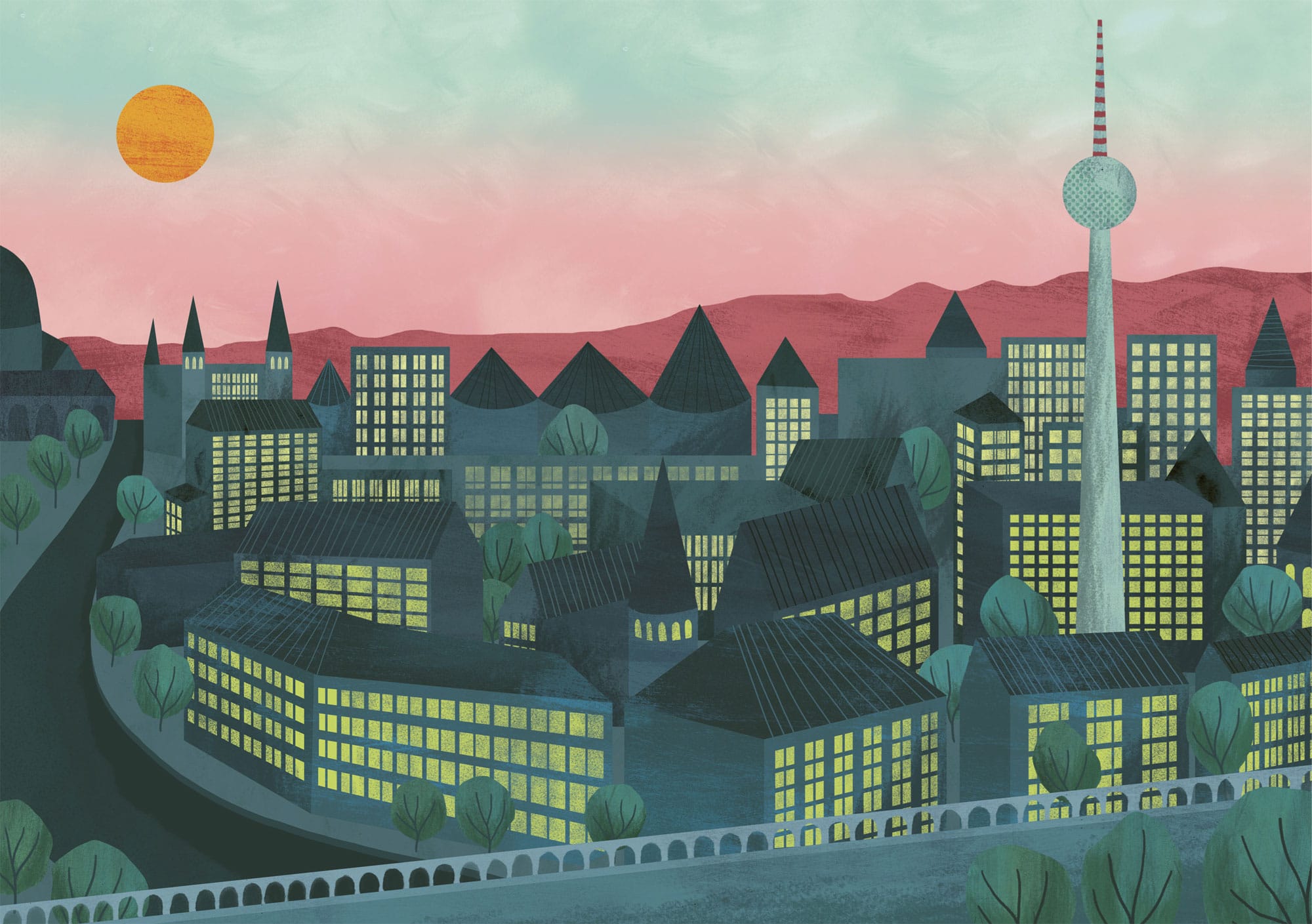BERLIN
Which? |
Berlin Alexanderplatz by Alfred Döblin (1929) |
What? |
Indefatigable German capital with a dark and dazzling past |
LIFE SWARMS around the square. S-Bahn trains and electric trams disgorge an endless stream of people, hurried feet weaving around the wide, paved plaza, eyes scanning the department stores and advertising boards, mouths wrapped around Ketwurst hot dogs and multifarious conversations. Each person has their own trials and triumphs: bankers, builders, adulterers, crooks, cabaret stars – who knows? Each writing their own story in this great metropolis …
For author Alfred Döblin, Berlin wasn’t just a city – it was the city. He grew up in the German capital, worked as a doctor in one of its slum neighbourhoods and once called himself a ‘Berliner with vague notions of other cities and regions’. He only moved away under duress – after the 1933 Reichstag fire, Berlin was a dangerous place for a left-leaning Jew. But before Döblin went into exile, before the country was in full thrall to the mania of Adolf Hitler, he wrote his masterpiece: Berlin Alexanderplatz.
The novel, published in 1929 during the years of the Weimar Republic, follows convicted murderer Franz Biberkopf as he’s released from prison. Biberkopf is determined to go straight but can’t quite free himself from the city’s seedy underbelly. He falls in with a gang, commits robbery, loses an arm, finds solace with a prostitute, gets framed for her murder and slowly loses his mind. But while the book is Biberkopf’s story, Döblin makes clear that his miserable antihero is just one of many souls surviving in this heaving city – at the time, the third-largest in the world. Berlin Alexanderplatz is an evocation of Berlin itself, capturing it at one of its headiest and darkest moments.


Via an expressionist collage of newspaper reports, biblical stories, drinking songs and urban slang, Döblin brings the city to life, from the sewers up, recording its cacophony, machinery, meteorology, mundanity, enormity. By the turn of the last page, Berlin has been heard, breathed, imbibed.
The novel’s backdrop is rife with violence, struggle and sin. The action plays out in the turbulent late 1920s, when Germany was clawing itself out of the First World War doldrums; a period of economic hardship and political unrest but also unprecedented cultural vitality, creativity and liberalism, as people sought respite from the recent horrors. Berlin Alexanderplatz snapshots this complex moment, when architecture, art and literature thrived, the nouveau riche were leading decadent lives but the proletariat were starving – in 1928, around 133,000 Berliners were unemployed. There’s a sense of foreboding too. Hitler made his first public speech in Berlin in 1928, the year before the novel’s publication; the rise of Nazism is imminent.
The working-class Alexanderplatz district is the ideal setting for Döblin’s urban portrait. ‘Alex’ lies in Mitte, the heart of Berlin, both geographically and culturally. A transport hub since the Middle Ages, in the 19th century the district’s main square was used as a cattle market and parade ground, but by the 1920s it was one of the city’s raciest spots, a hotbed of nightclubs, burlesque shows, prostitutes, cocaine dealers, high hemlines and homosexuality.
Today, Alex is transformed. Alexanderplatz itself was largely flattened by Allied bombs during the Second World War but was rebuilt in the 1960s, when it was the centre of East Berlin. At this time, the square was pedestrianised and flanked with the dull, concrete Plattenbau-style architecture favoured by the DDR. Also, more notable landmarks were erected: the huge Centrum department store (now the Galeria Kaufhof mall); the Weltzeituhr (world clock), which shows the time in 148 cities; and the copper bowls of the Brunnen der Völkerfreundschaft (Fountain of International Friendship). Lording over everything is the 368 metre- (1,207 foot-) high Fernsehturm (TV tower), completed in 1969 to provide a strident symbol of Communist power. It’s still Germany’s tallest building. Lifts – or 986 steps – lead up to the tower’s sphere, where a visitor platform and rotating restaurant offer sweeping views. Quite the eyrie from which to look down on Döblin’s much-changed but indomitable city.
